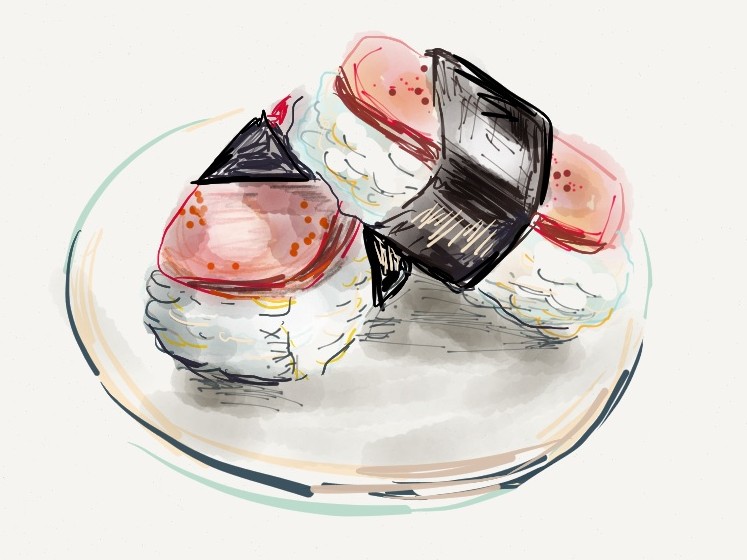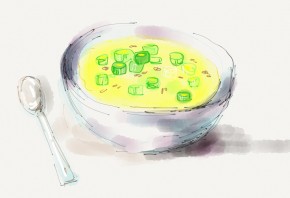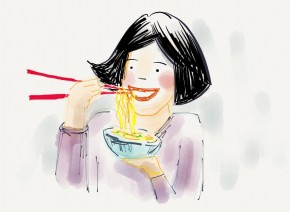Growing up all over the U.S. as a second-generation child of Korean immigrants, food was one way my parents remained connected to their native country and introduced its culture to me and my brother. As we moved from Illinois to Virginia to Tennessee, we grew to love deep-dish pizza, Chicago-style hot dogs, barbecue and other staples of regional American cuisine. But we didn't go out to eat very much as my father worked long hours as a doctor, so occasional outings to restaurants were special trips saved for the weekends.
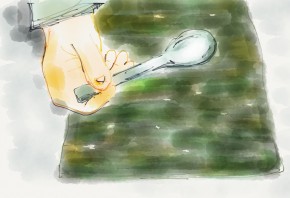
My brother and I were enthralled with American junk food, as McDonald's, potato chips and doughnuts seemed "exotic" to our palates. While our refrigerator was filled mostly with homemade Korean dishes that my mom had prepared -- like large stinky jars of kimchee (we even had a separate refrigerator in the garage that exclusively stored our supply as the smell was so overpowering) -- we, of course, wanted all of the goodies we'd see our friends eating at school. So we would eagerly go to the supermarket with our mom and pester her to buy us Doritos or Pringles and Ding Dongs and Coca-Cola to go along with our lunchtime Wonder Bread peanut butter and jelly sandwiches.
Dried seaweed, or kim (pronounced keem), was one healthy treat that we'd accept as a substitute for Ruffles or Cheetos. My mom would rub the large dried sheets with vegetable oil (usually sesame oil, sometimes canola), using the back of the spoon to spread a thin, even coating on one side. After sprinkling a little bit of salt on top, she'd take each sheet with a pair of chopsticks and gently toast it in a skillet or wave it directly over a gas flame on the stovetop. Flipped regularly to heat both sides, they'd be done when the sheets became translucent and small holes slowly appeared about a minute later. Then they'd be cut up into squares to be eaten plain or with rice.
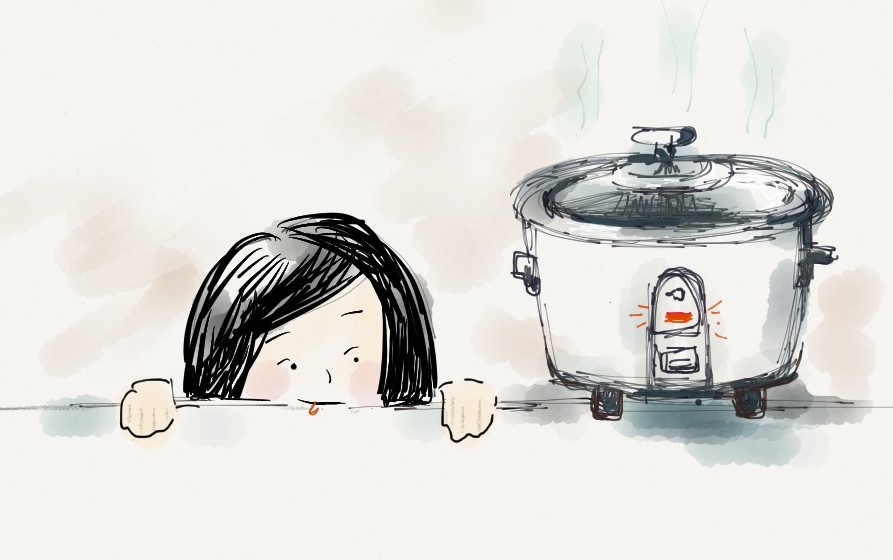
Now rice was the staple food of my childhood. Whenever I'd come home from school, I'd look to see if the bright orange indicator light on our Zojirushi rice cooker was on (and it usually was), because that meant there was some delicious white Kokuho Rose rice warming inside ready for me to eat. One of the easiest and simplest snacks my brother and I would make was an improvised "rice carbonara": we'd crack a raw egg into a bowl of rice, add a splash of soy sauce and quickly swish the whole mixture together so that the heat would cook the egg (although most of the time it'd stay kind of slimy, but we didn't care.) Then my brother and I would park ourselves in front of the TV to watch cartoons, our bowls of sloppy rice porridge perched on our laps.
While my mom was the head chef of the household, my dad would take a few guest stints in the kitchen when his busy schedule permitted him to tie on an apron.
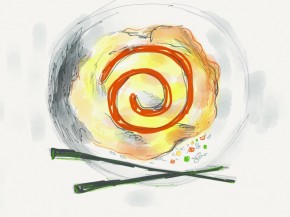
While he didn't have a lot of dishes in his repertoire, he was an expert at preparing omelette rice, or omurice, which was introduced by the Japanese to Koreans during the occupation of their country from the late 1800's through World War II. Taking a bag of frozen vegetables (usually peas, corn, diced carrots and green beans, which I'd pick out in disgust and pile up on the side of my plate), he sautéed them in butter before adding cups of cold rice and soy sauce. Then he'd fry a thin omelette that he'd drape on top of the fried rice and decorate with swirls of ketchup.
